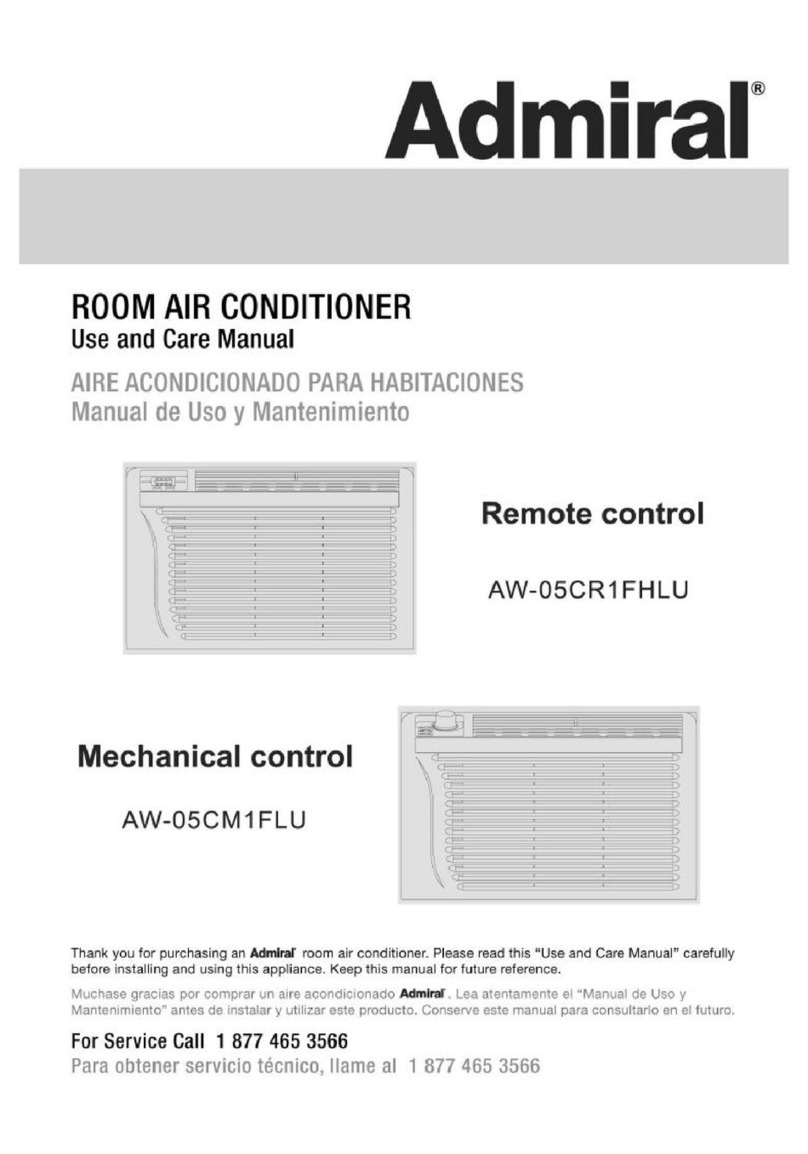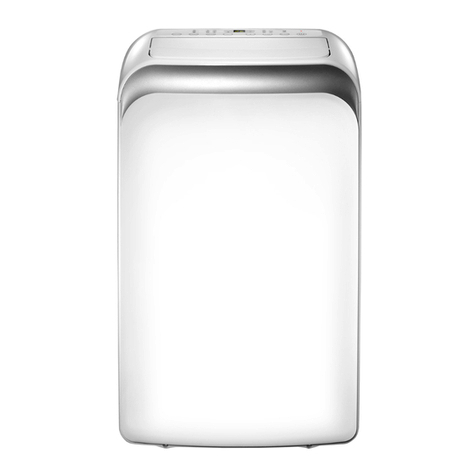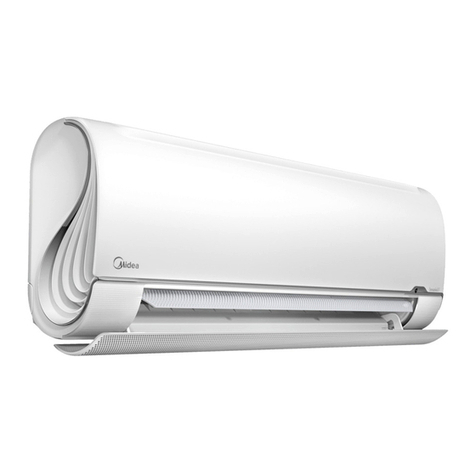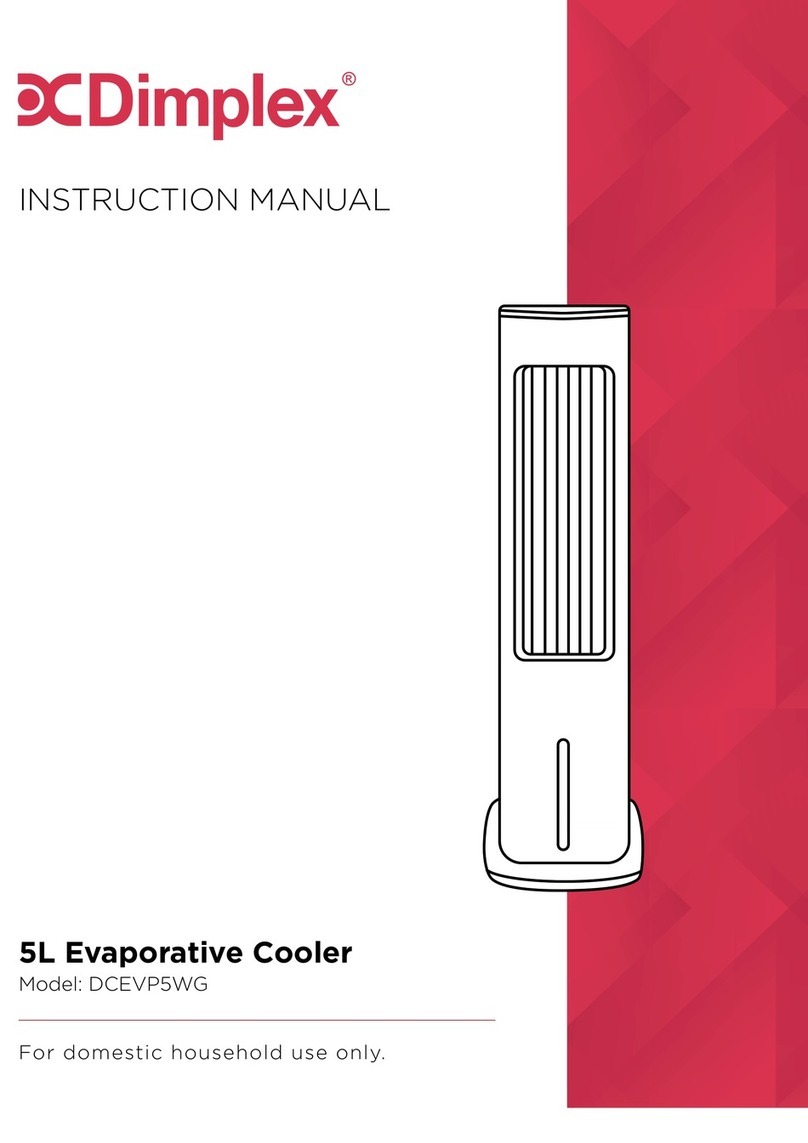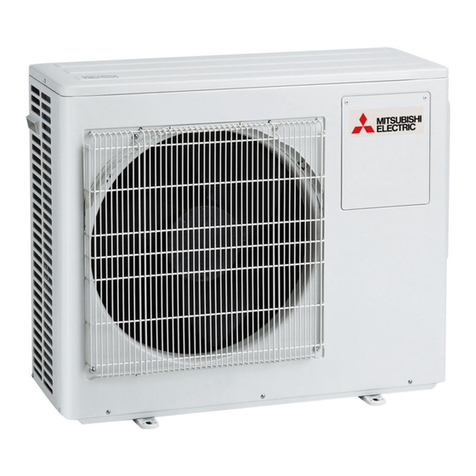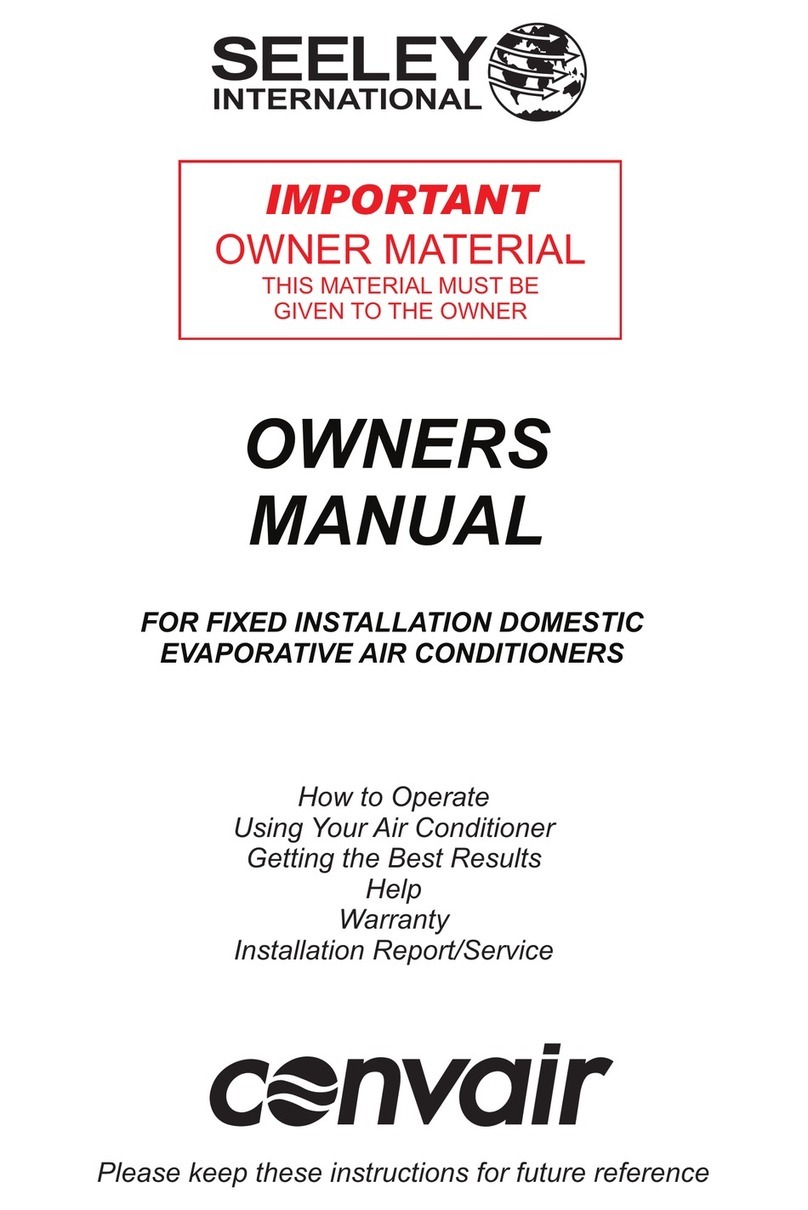Roof Tech 100 Manual

English
Installation and maintenance manual
Manuel d’installation et de maintenance
Installations- und Wartungshandbuch
Manuale di installazione e di manutenzione
Manual de instalación y de mantenimiento
IOM RT 02-N-7ALL
Part number / Code / Teil Nummer / Codice / Código : 3990426
Supersedes / Annule et remplace / Annulliert und ersetzt /
Annulla e sostituisce / Anula y sustituye : IOM RT 02-N-6ALL
Français EspañolDeutsch Italiano
ROOFTECH
100 ÷ 160
ROOF-MOUNTED AIR CONDITIONING UNIT
UNITE MONOBLOC DE TOITURE
DACHKLIMAGERÄT
UNITÀ D’ARIA CONDIZIONATA DA TETTO
UNIDAD DE AIRE ACONDICIONADO DE TEJADO
98.5
158.1
97.4
155.3
Библиотека СОК


INSTALLATION INSTRUCTION
NOTICE D’INSTALLATION
INSTALLATIONSHANDBUCH
ISTRUZIONI INSTALLAZIONE
INSTRUCCIONES DE INSTALACIÓN

2
CONTENTS
GENERAL RECOMMENDATIONS ...............................................................................................................3
SAFETY DIRECTIONS................................................................................................................................................................ 3
WARNING ............................................................................................................................................................................... 3
EQUIPMENT SAFETY DATA ....................................................................................................................................................... 4
INSPECTION AND STORAGE.....................................................................................................................5
WARRANTY ...............................................................................................................................................5
CONTENTS OF PACKAGE..........................................................................................................................5
PRESENTATION .........................................................................................................................................5
TECHNICAL SPECIFICATIONS....................................................................................................................6
OPERATING LIMITS .................................................................................................................................................................. 6
DIMENSIONS ............................................................................................................................................6
HANDLING ...............................................................................................................................................6
NET WEIGHT ........................................................................................................................................................................... 7
POSITION OF CENTRE OF GRAVITY FOR THE BASE MODULE................................................................................................... 7
ELECTRICAL SPECIFICATIONS ...................................................................................................................8
UNIT WITHOUT HEATING........................................................................................................................................................ 8
UNIT WITH HEATING TYPE CH1 ............................................................................................................................................... 8
UNIT WITH HEATING TYPE CH2 ............................................................................................................................................... 8
INSTALLATION ..........................................................................................................................................8
PLACE OF INSTALLATION AND REQUIREMENTS........................................................................................................................ 8
CLEARANCE ............................................................................................................................................................................ 9
UNIT LOCATION ..................................................................................................................................................................... 9
CONDENSATE DRAIN PAIN ...................................................................................................................................................... 9
ROOF CURB.......................................................................................................................................................................... 10
DIMENSIONS .......................................................................................................................................................................................... 10
CONFIGURATION OF THE UNIT .............................................................................................................11
GENERALITES......................................................................................................................................................................... 11
SUPPLY AIR............................................................................................................................................................................. 11
AIR INTAKE ............................................................................................................................................................................ 11
DUCT OUTLET DIMENSIONS ................................................................................................................................................. 11
ECONOMISER .........................................................................................................................................12
ECONOMISER - 2 FLAPS........................................................................................................................................................ 12
ECONOMISER - 3 FLAPS........................................................................................................................................................ 13
ELECTRIC HEAT .......................................................................................................................................13
WIRING DIAGRAM AND LEGEND............................................................................................................14
WIRING DIAGRAM................................................................................................................................................................. 14
LEGEND ................................................................................................................................................................................ 14
POWER SUPPLY........................................................................................................................................................................................ 14
WIRING DIAGRAM KEY DESCRIPTIONS .................................................................................................................................................... 14
POWER SUPPLY DIAGRAMS: ............................................................................................................................................................................................. 14
CONTROL AND REGULATION DIAGRAMS........................................................................................................................................................................ 15
RANGE AND SETTINGS OF THEMAL PROTECTION / NOMINAL INTENSITY OF THE CONTACTORS (CLASSE AC3)..................................... 16
COMPRESSORS CRANKCASE HEATER....................................................................................................................................................... 16
PRESSOSTATS SETTING ........................................................................................................................................................................... 16
ELECTRICAL CONNECTIONS...................................................................................................................17
COMMISSIONING...................................................................................................................................19
PRE-START CHECK LIST........................................................................................................................................................... 19
ELECTRICAL CHECK................................................................................................................................................................................. 19
VISUAL CHECK ........................................................................................................................................................................................ 19
DUCTING................................................................................................................................................................................................ 19
AIR BALANCING ...................................................................................................................................................................................... 20
CASE N°1: ....................................................................................................................................................................................................................... 20
CASE N°2: ....................................................................................................................................................................................................................... 20
OPERATING CHECK LIST........................................................................................................................................................ 21
GENERAL................................................................................................................................................................................................. 21
PHASE ROTATION PROTECTION ............................................................................................................................................................. 21
ELECTRICAL............................................................................................................................................................................................. 21
SET POINTS ..................................................................................................................................................................................................................... 21
OPERATING VOLTAGE: .................................................................................................................................................................................................... 21
CONTROL....................................................................................................................................................................................................................... 21
BLOWER & DRIVE..................................................................................................................................................................................... 21
COMPRESSOR AND REFRIGERATION SYSTEM .......................................................................................................................................... 21
FINAL CHECK .......................................................................................................................................................................................... 22
FINAL TASKS ...........................................................................................................................................22
IN CASE OF WARRANTY - MATERIAL RETURN PROCEDURE ....................................................................22
ORDERING SERVICE AND SPARE PARTS ORDER ......................................................................................22
MAINTENANCE.......................................................................................................................................22
REGULAR MAINTENANCE ...................................................................................................................................................... 22
GENERAL INSPECTION .......................................................................................................................................................... 22
ACCESS PANELS..................................................................................................................................................................... 23
BLOWER DRIVE SYSTEM ......................................................................................................................................................... 23
COILS ................................................................................................................................................................................... 23
ELECTRICAL SECTION............................................................................................................................................................ 23
SERVICING CHECKLIST .......................................................................................................................................................... 24
TROUBLE SHOOTING..............................................................................................................................25

3
POWER SUPPLY MUST BE
SWITCHED OFF
BEFORE STARTING TO
WORK IN THE ELECTRIC
CONTROL BOX
GENERAL RECOMMENDATIONS
Please read the following safety precautions very carefully before installing the unit.
SAFETY DIRECTIONS
Follow the safety rules in forces when you are working on your appliance.
The installation, commissioning and maintenance of these units should be performed by qualified personnel having
a good knowledge of standards and local regulations, as well as experience of this type of equipment.
Given the requirements of pressurising the system and the high current draws involved, this roof-
mounted air conditioning should only be installed by qualified personnel.
The unit should be handled using lifting and handling equipment appropriate to the unit's size and weight.
Given the high refrigerant temperatures present at certain points in the cooling circuit, access to
the area protected by the panels is strictly reserved for qualified personnel only. These panels are
easily opened with a special tool. This tool should be kept by the installers or by the maintenance
company.
Any wiring produced on site must comply with the corresponding national electrical regulations.
Make sure that the power supply and its frequency are adapted to the required electric current of operation, taking
into account specific conditions of the location and the current required for any other appliance connected with
the same circuit.
The unit must be EARTHED to avoid any risks caused by insulation defects.
It is forbidden to start any work on the electrical components if water or high humidity is present on the installation
site.
WARNING
Cutoff power supply before starting to work on the appliance.
When making the hydraulic connections, ensure that no impurities are introduced into the pipe work.
The manufacturer declines any responsibility and the warranty becomes void if these instructions
are not respected.
If you meet a problem, please call the Technical Department of your area.
If possible, assemble the compulsory or optional accessories before placing the appliance on its final location. (see
instructions provided with each accessory).
In order to become fully familiar with the appliance, we suggest to read also our Technical Instructions.
-The informations contained in these Instructions are subject to modification without advance notice.

4
EQUIPMENT SAFETY DATA
Safety Data R410A
Toxicity Low
In contact with skin Skin contact with the rapidly evaporating liquid may cause tissue chilblains. In case of
skin contact with the liquid, warm the frozen tissue with water and call a doctor. Remove
contaminated clothing and footwear. Wash the clothing prior to re-use.
In contact with eyes Vapours have no effect. Liquid splashes or sprays may cause freeze burns. In these
cases rinse your eyes with running water or with a solution for eye lavages for at least
10 minutes. Immediately contact a doctor.
Ingestion In this case, burns may result. Do not attempt to make the patient vomit. If the patient
is conscious, rinse the mouth with water. Call a doctor immediately.
Inhalation In case of inhalation, move the patient to an area with fresh air and provide oxygen if
necessary. Perform artificial respiration if the patient has stopped breathing or lacks air.
In case of cardiac arrest, perform external cardiac massage. Call a doctor immediately.
Further Medical Advice Exposure to high concentrations can be dangerous for individuals with cardiac problems,
as the presence of catecholamines such as adrenalin in the bloodstream may lead to
increased arrhythmia and possible cardiac arrest.
Occupational exposure
limits
R410A: Recommended limits: 1,000 ppm v/v 8 hours TWA.
Stability Stable product
Conditions to avoid Increased pressure due to high temperatures may cause the container to explode. Keep
out of the sun and do not expose to a temperature >50°C.
Hazardous reactions Possibility of dangerous reactions in case of fire due to the presence of F and/or CI
radicals
General precautions Avoid the inhalation of high concentrations of vapours. The concentration in the atmos-
phere shall be kept at the minimum value and anyway below the occupational limits.
Since vapours are heavier than air and they tend to stagnate and to build up in closed
areas, any opening for ventilation shall be made at the lowest level.
Breathing protection In case of doubt about the actual concentration, wear breathing apparatus. It should
be self-contained and approved by the bodies for safety protection.
Storage Preservation Refrigerant containers shall be stored in a cool place, away from fire risk, direct sunlight and all
heatsources,suchasradiators.Themaximumtemperatureshallneverexceed50°Cinthestorage
place.
Protection clothes Wear boots, safety gloves and glasses or masks for facial protection.
Behaviour in case of
leaks or escapes
Never forget towearprotectionclothesandbrethingapparatus.Isolatethesourceoftheleakage,
provided that this operation may be performed in safety conditions. Any small quantity of
refrigerant which may have escaped in its liquid state may evaporate provided that the room is
wellventilated.Incase of a largeleakage, ventilate theroom immediately. Stopthe leakage with
sand, earth or any suitable absorbing material. Prevent the liquid refrigerant from flowing into
drains, sewers, foundations or absorbing wells since its vapours may create an asphyxia-
ting atmosphere.
Disposal The best procedure involves recovery and recycle. If this is not possible, the refrigerant shall be
given to a plant which is well equipped to destroy and neutralise any acid and toxic by-product
which may derive from its disposal.
Combustibility features R410A: Non-inflammable at ambient temperatures and atmospheric pressures.
Containers If they are exposed to the fire, they shall be constantly cooled down by water sprays.
Containers may explode if they are overheated.
Behaviour in case of
fire
In case of fire wear protection clothes and self-contained breathing apparatus.

5
INSPECTION AND STORAGE
At the time of receiving the equipment carefully cross check all the elements against the shipping documents in
order to ensure that all the crates and boxes have been received. Confirmation of the type of unit ordered can be
obtained by reading the maker’s plate (capacity, type and air blowing configuration).
Inspect the units for any visible or hidden damage.
In the event of shipping damage, write precise details of the damage on the shipper’s delivery note
and send immediately a registered letter to the shipper within 48 hours, clearly stating the damage
caused. Forward a copy of this letter to the manufacturer or their representative.
Never store or transport the unit upside down. Protect unit at the job side from domages made by others. When
unit is stored on the ground, avoid mud store unit leveled.
CONTENTS OF PACKAGE
1 ROOFTECH
1 Installation and maintenance manual
1 Control manual
WARRANTY
The appliances are delivered fully assembled, factory tested and ready to operate.
Any modification to the units without the manufacturer’s prior approval, shall automatically render the warranty
null and void.
The following conditions must be respected in order to maintain the validity of the warranty:
Commissioning shall be performed by specialised technicians from technical services approved by
the manufacturer.
Maintenance shall be performed by technicians trained for this purpose.
Only Original Equipment spare parts shall be used.
All the operations listed in the present manual shall be performed within the prescribed schedule.
THE WARRANTY SHALL BE NULL AND VOID IN THE EVENT
OF NON-COMPLIANCE WITH ANY OF THE ABOVE CONDITIONS.
PRESENTATION
The machine has been designed for an outdoor mounted application, ensuring perfectly weatherproof circulation
of the air within the compartments.
Packaged ROOFTECH units are designed to safeguard to environment and reduce building energy consumption
by the use of R410A as a refrigerant and double skin 50 mm panels for greater thermal insulation.
All the units are factory charged and tested, and ready to install to guarantee quick and efficient commissioning.
A modular design enables the system to be adapted perfectly to the client’s configuration. The present manual
defines the characteristics of the base module.
INSTRUCTIONS FOR FILLING IN THE "1st START-UP FORM"
(SEE APPENDIX)
It is the responsibility of the OWNER to make sure that the "1st Start-up Form" is fully filled in by the authorized
Service Centre and sent by registered mail - notified in advance by fax - to the After-Sales Service of the constructor
within 8 days of the initial start-up.
Failure to receive the form on the part of the constructor will render the guarantee null and void.
The OWNER must then keep the logbook for at least the duration of the guarantee.
The constructor reserves the right to request a copy of the "Machine Logbook" at any moment whatsoever. Failure
to fill in the logbook may render the guarantee null and void.

6
DIMENSIONS
HANDLING
SEE APPENDIX
TECHNICAL SPECIFICATIONS
You can adjust the available static pressure and flow by adjusting the variable motor pulley fitted to the blower
(SEE AIR BALANCING).
Models 100 120 140 160
Compressor type Scroll Tandem Scroll Tandem Scroll Tandem Scroll Tandem
Compressor quantity 4444
Number of circuit 2222
Refrigerant R-410A
Charge of circuit kg SEE NAME PLATE
Number of blower 1 1 1 1
Type Centrifugal
Nominal indoor airflow m3/h 20 000 22 500 27 500 30 000
Pressure available Pa 350 350 350 350
Number of outdoor fans 2 2 2 2
Type Helicoid
Total nominal external airflow m3/h 41 000 41 000 41 000 41 000
HANDLING WITH A FORKLIFT TRUCK PROHIBITED
OPERATING LIMITS
Cooling mode * : +20°C/+43°C
Heating mode : -7°C/+21°C
* without all seasons kit

7
NET WEIGHT
THE LIFTING POINT MUST SUIT THE UNIT’S CENTRE OF GRAVITY
(SEE CHART BELOW).
POSITION OF CENTRE OF GRAVITY FOR THE BASE MODULE
Approximative length
Z
X
Y
1286
2259
2141 1284
Four sling attachment points are provided for lifting.
Rings attached rigidly to the unit structure are intended for
completely safe handling.
A sling spreader is required to avoid damaging the
edges of the unit. (mini: 2300mm)
Models XG YG ZG
mm mm mm
base
module 1104.5 1340 2210
Models
Base module option
100 120 140 160 Burner gas filter EU7 3 flaps
Weight Kg 1815 1950 387 188 365

8
INSTALLATION
ELECTRICAL SPECIFICATIONS
IMPORTANT
** for all other capacities, please consult us.
A main fuse must mandatorily be provided on the power supply.
Fuses not supplied
Cables not supplied
The unit is not designed to withstand weights or stresses from adjacent equipment, pipe work or
constructions. Any foreign weight or stress on the unit structure could lead to a malfunction or a
collapse with dangerous consequences for personnel and property. In such an event, the warranty
shall be null and avoid.
The unit supporting base shall be supplied as indicated in the manual. There could be a risk of
personal injury or damage to property in the event of the unit being incorrectly supported.
The building structure must be capable of carrying the weight of the unit during operation.
The place of installation must not be subject to flooding.
The ROOFTECH should be installed on a flat, clean surface without any obstacles. The surface area
must be sufficient to spread the weight of the unit over the building structure.
Ensure that the recommended free clearances around the unit are maintained to avoid any risk of
malfunctions.
The installer is responsible for providing the weaterproof seal between the building and the ROOFTECH.
The installer must be fully versed in the practice of roof mounted equipments and must comply with
the recommendations and rules detailed in the Technical Directives.
In order to avoid risk of condensation and energy losses, all outdoor ducting and piping must be
insulated.
The unit’s tightness must not be deteriorated by power supply connections.
UNIT WITHOUT HEATING
UNIT WITH HEATING TYPE CH1
PLACE OF INSTALLATION AND REQUIREMENTS
UNIT WITH HEATING TYPE CH2
Models 100 120 140 160
PE GE PE GE PE GE PE GE
Power supply 3+N /400 /50Hz
Maximum current A 123 136 127 140 139 152 167 180
Total starting current A 209.6 223 231.6 245 228.6 242 289.6 303
Fuse rating aM A 160 160 160 160 160 160 200 200
Models 100 120 140 160
PE GE PE GE PE GE PE GE
Power supply 3 /400 /50Hz
Capacities ** KW 63
Maximum current A 233 246 237 250 249 262 277 290
Total starting current A 319.6 333 341.6 355 338.6 352 399.6 413
Fuse rating aM A 250 250 250 250 250 315 315 315
Models 100 120 140 160
PE GE PE GE PE GE PE GE
Power supply 3 /400 /50Hz
Capacities ** KW 105
Maximum current A 306 319 310 323 322 335 350 363
Total starting current A 392.6 406 414.6 428 411.6 425 472.6 486
Fuse rating aM A 315 315 315 400 400 400 400 400

9
CLEARANCE
1. It must be high enough above the roof or ground to permit snow allowance and good drainage of
water with siphon
2. Keep duct connections outside the building to a minimum to reduce energy losses.
3. In addition to the service clearances noted above it is essential that provision is made for adequate
and safe service access to the appliance.
UNIT LOCATION
The drawing below illustrates the minimum service clearances to be provided around the unit to guarantee access
and proper operation. Take particular care
not to obstruct the outdoor coil in order to
ensure proper air circulation through the
appliance.
In addition to the service clearances stated
on the dimensions sheet, it is imperative that
safe and appropriate access to the unit is
provided for repairs and servicing.
* Removable condensates tray.
A
A
A
B
C
Models 100 120 140 160
A mm 1500 1500 1500 1500
B* mm 1800 1800 1800 1800
C mm 3000 3000 3000 3000
CAUTION
For Heatpump models, where the outdoor temperature is likely to fall
below +1°C, provide a system to prevent the siphon from freezing
(e.g. heating cord).
CONDENSATE DRAIN PAN
H
Relationship with available
outdoor pressure
The installer must imperatively supply a siphon.
1082
218
DIMENSIONS
FOR THE BASE MODULE
Ø 30
L = 30mm
Siphon to be supplied by
others

10
ROOF CURB
The main purpose of the roof curb is to provide weatherproof passage,
supply and return air down to the building from the ROOFTECH.
In this way, all connections (air, electricity) to the building are not free
above the roof. The curb provides a perfect roofing thermal insulation
and weight distribution between the ROOFTECH and the building.
The roof curb should be used for a downward configuration at supply
and return air. The roof curb guarantees the perfect weathertight
sealing between the building structure and the appliance.
Two versions are available:
Assembled and non-adjustable version
Non-assembled and non-adjustable version
The frame of the curb receiving the unit must be leveled. The unit must slot perfectly into the roof curb.
POSITIONING OF THE ROOF CURB ON THE ROOF (CUTAWAY VIEW)
1 Roof curb
2 Rubber seal (supplied with
the roof curb)
3 Hard vibration-absorbent
rubber (option)
4 Concrete beam or slab
5 Vapour sealing film (supplied
by the roofer)
6 Roof insulation (supplied
by the roofer)
7 Sealant roofskin (supplied by
the roofer)
In order to break a thermal bridge between the roof curb and the unit, a seal (N°2) (50 X 5 mm) is
supplied with the roof curb. This seal must be glued by the installer on the roof curb to avoid metal
to metal contact and reduce eventual vibration transfer.
Once installed and fastened to the roof structure, the outside wall of the curb must be fully integrated in the roof
insulation.
The minimum insulation thickness required is 25 mm and the surface must be protected by a bituminous coating
(or any other equivalent material) to ensure a perfect weatherproof seal.
DIMENSIONS
SEE APPENDIX
ROOFTECH
1
2
3
4
5
6
7

11
The unit is designed to be connected to a duct work. The duct network pressure loss must be related to available
outdoor pressure. Should it not be the case, a discharge protection grille and a device creating sufficient pressure
drop must be supplied by the installer to avoid excess current draw generated at the motor (see blower curves in
the appendix)
4 discharges and 5 intakes air configurations are available.
For each configuration, note the dimensions of the discharge air duct to be provided before the unit arrives on site.
Make sure that it is fireproof and that it does produce toxic smoke in the event of a fire in the building. The interior
surfaces must be smooth and cleanable to avoid contamination of the circulated air.
To ensure itself of a good air tightness and to water enters the machine and the air duct.
CONFIGURATION OF THE UNIT
GENERALITIES
NEVER DRILL ANY HOLES IN THE AIR TREATMENT ZONE OF THE UNIT. THE
MANUFACTURER’S WARRANTY WILL BE CANCELLED IN THE EVENT OF ANY
WATER LEAKS RESULTING FROM THE DRILLING OF HOLES IN THE CASING.
Downward discharge: S1
Sideway discharge: S2L or S2R
Top discharge: S4
SUPPLY AIR
Return air from below: R1
Return air from the side: R2L or R2R
Return air from the rear: R3
Return air from the top: R4
DUCT OUTLET DIMENSIONS
SEE APPENDIX
AIR INTAKE
Lower blowing (S1) or lower air intake (R1) require the presence of a roof curb. For other versions, given the unit’s
weight, analyse the installation to avoid any risk of damage to the bracket on which the unit will be placed.

12
ECONOMISER
ECONOMISER - 2 FLAPS
The economiser is a set of two dampers driven by one actuator. The
quantity of outdoor air introduced into the building varies according
to the room set point and provides energy savings in both modes.
Economiser is used to modulate the return and outdoor air volumes.
It also provides an antifreeze protection during OFF period by closing
the outdoor air dampers
1 Filter
2 Indoor coil
3 Heating
3-A Hot water or Gas
3-B Additional heating
4 Centrifugal fan
5 Axial fan
6 Outdoor coil
7 Compressor with reversal cycle valve
8 Return air dampers
9 Outdoor air dampers
B
C
D
7
A
M
12
6
5
3-A
8
9
B
4
3-B
D
6
5
7
A Supply air
B Return air
C outdoor air
D Outdoor air to outdoor coil

13
ELECTRIC HEAT
The electric coil is located directly at the blower outlet. It is not available in the case of a top discharge version
(S4). Air deflector are supplied to guide the stream around the heating elements.
B
C
D
7
A
M
12
6
5
3-A
8
9
B
4
10
E
M
11
3-B
D
6
5
7
A Supply air
B Return air
C outdoor air
1 Filter
2 Indoor coil
3 Heating
3-A Hot water or Gas
3-B Additional heating
4 Centrifugal fan
5 Axial fan
6 Outdoor coil
7 Compressor with reversal cycle valve
8 Return air dampers
9 Outdoor air dampers
10 Vitiated air dampers
11 Extractor fan
ECONOMISER - 3 FLAPS
It comprises of a set of 3 dampers with an intake fan that enables on the one hand, to combat the pressure loss
from the return ducts and on the other hand, to extract vitiated air from the building in order to avoid excessive
pressure build ups when operating in "Free Cooling" mode.
D Outdoor air to outdoor coil
E Vitiated air extracted
Safety devices (thermostats and pressostats) protect the machine from possible risks of overheating due to insufficient
flow around the shielded elements.

14
WIRING DIAGRAM KEY DESCRIPTIONS
LEGEND
N 760
WIRING DIAGRAM SEE APPENDIX
POWER SUPPLY
This supply is protected upstream by an FFG general supply fuse holder, to be provided by the installer, in accordance
with "ELECTRICAL SPECIFICATIONS". The fuse holder shall be mounted close to the unit.
The electrical installation and the wiring of this unit shall comply with local electrical installation standards.
Thee phase 400 V~ + Neutral + Ground:
On terminals L1 ; L2 ; L3 ; N on the QO mains supply circuit switch.
On the ground screw for the earth cable.
POWER SUPPLY DIAGRAMS:
FFG: Protective fuses (not supplied)
XO: Phase distributor
QO: Mains supply circuit switch
KA1: Three-phase network control relay (phase
sequence and cut-out)
Q1/2/3/4: C1/2/3/4 compressors magneto-thermal
circuit breaker
KM1/2/3/4: C1/2/3/4 compressors power circuit
contactor
C1/2/3/4: Compressors
R1/2/3/4: C1/2/3/4 compressors crankcase
heater
FT1 : Control circuit magneto-thermal circuit
breaker
F2/4: Fuse-terminal + fuse
FF14: Fuse-carrier
K14: Pump relay (heat recovery pump
option)
F3: Differential circuit breaker, power socket
and interior lighting
PO: 230V power socket
LS: ON/OFF switch, ROOFTECH interior
lighting
L: Technical compartment interior lighting
T1/2: 230V24V AC transformer (25VA)
FF5: Blower fan fuse-carrier
FF6/7: Outdoor fans fuse-carrier
FF8: Intake air fan fuse-carrier
Q5: Blower fan magneto-thermal circuit
breaker
Q6/7: Outdoor fans magneto-thermal circuit
breaker
Q8: Intake air fan magneto-thermal circuit
breaker
Q9: Extractor fan magneto-thermal or
magnetic circuit breaker
KM5/6/7/8/9:Fan power contactors
ACS 5/8: Blower and intake air fan three-phase
frequency regulator with RFI filter
ACS 6/7: Outdoor fans three-phase frequency
regulator with RFI filter
M5: Indoor fan motor
M6/7: Outdoor fan motor
WIRING DIAGRAM AND LEGEND
ROOFTECH 100-120-140-160
RTCH RTCL RTCH + BURNER RTCL + BURNER
Control 230V 50Hz +/- 10% SE3455 SE3541 SE3543 SE3544
Power Tri 400V+N 50Hz +/- 10%
SE34561 SE3542 SE34561 SE3542
SE34562 SE34562 SE34562 SE34562
SE34563 SE34563 SE34563 SE34563
SE34564 SE34564 SE34564 SE34564

15
CONTROL AND REGULATION DIAGRAMS
pCO1: CAREL regulation
pCOe: Additional CAREL regulation
board(Economiser option)
PC1/2: Converter
CONV 1/2: Circuits 1 and 2 electronic regulator
converters
EEV1/2: Electronic regulator
EP1/2: Circuits 1 and 2 low pressure sensors
Q1/2/3/4: C1/2/3/4 compressors additional
magneto-thermal circuit breaker
Q5: Blower fan additional magneto-thermal
circuit breaker
Q10/11/12/13: Heating elements additional
magnetic circuit breaker
OF1/OF2: MO1/MO2 motors internal protection
FM: Heating manual reset safety thermostat
FA: Heating automatic reset safety
thermostat
KA1: Three-phase network control relay (phase
sequence and cut-out) contact
HP1/2: Circuits 1 and 2 automatic reset high-
pressure pressostats
LP1/2: Circuits 1 and 2 automatic reset low-
pressure pressostats
OCT1/2: Circuits 1 and 2 condenser temperature
sensor
RAT: Intake air temperature sensor
CST1/2: Circuits 1 and 2 compressor air intake
temperature sensor
OAT: Outdoor air temperature sensor (option)
SAT: Blown air temperature sensor (option)
RAH: Intake air hygrometry sensor (option)
IAQ: Intake air quality sensor (option)
OAH: Outdoor air hygrometry sensor (option)
SD: Smoke detector (option)
ECM: Economiser dampers motor (option)
HWV: Hot water battery valve (option)
CONV 3: Hot water battery valve converter
(option)
CONV 4: Variators ACS5/8 order 0-10V converter
HWC: Anti-freezing, hot water battery warning
DFA1: Clogged filter warning (ΔP>250Pa)
DFA2: Clogged bag filter warning (ΔP>500Pa)
AF: Air pressostat (ΔP<50Pa)
ON/OFF: ON/OFF switch (not supplied)
SWS: Winter/Summer switch
KM1/2/3/4: C1/2/3/4 compressors power contactor
KM5/6/7/8/9: Fan power contactors
KM10/11/12/13: H eating elements power
contactors
EV1/2: Circuits 1 and 2 cycle inversion valve
KA6/7: Circuits 1 and 2 heating demand auxiliary
relays
M8: Intake fan motor
M9: Extractor fan motor
AS5: Motor M5 "Soft start"
AS8: Motor M8 "Soft start"
Q10/11/12/13: Heating elements magnetic circuit
breakers
KM10/11/12/13: Heating elements power contactors
CH.1: Small capacity heating option
CH.2: Large capacity hearting option
BURNER: Option burner gas

16
PRESSOSTATS SETTING
Factory high pressure adjustment 42bars (609.17PSI )
Clogged filter ΔP warning (upstream/downstream filters) > 250 Pa
Airflow detector ΔP warning (upstream/downstream blower)< 50 Pa
RANGE AND SETTINGS OF THEMAL PROTECTION / NOMINAL INTENSITY OF THE
CONTACTORS (CLASSE AC3)
Model 100 120 140 160
PE GE PE GE PE GE PE GE
Q1 Range 20-25A 20-25A 20-25A 24-32A
Adjustment 21A 22A 23A 32A
Q2 Range 20-25A 20-25A 20-25A 24-32A
Adjustment 21A 22A 23A 32A
Q3 Range 20-25A 20-25A 20-25A 24-32A
Adjustment 21A 22A 23A 32A
Q4 Range 20-25A 20-25A 20-25A 24-32A
Adjustment 21A 22A 23A 32A
Q5 Range 13-18A 13-18A 13-18A 13-18A
Adjustment 15A 15A 15A 15A
Q6 Range 2.5-4A 2.5-4A 2.5-4A 2.5-4A
Adjustment 3.5A 3.5A 3.5A 3.5A
Q7 Range 2.5-4A 2.5-4A 2.5-4A 2.5-4A
Adjustment 3.5A 3.5A 3.5A 3.5A
Q8 Range 13-18A 13-18A 13-18A 13-18A
Adjustment 15A 15A 15A 15A
Q9 Range 4-6.3A 4-6.3A 4-6.3A 4-6.3A
Adjustment 6A 6A 6A 6A
Contactor AC3
K1 25A 25A 25A 32A
K2 25A 25A 25A 32A
K3 25A 25A 25A 32A
K4 25A 25A 25A 32A
K5 18A 18A 18A 18A
K6 6A 6A 6A 6A
K7 6A 6A 6A 6A
K8 18A 18A 18A 18A
K9 9A 9A 9A 9A
COMPRESSORS CRANKCASE HEATER
Models 100 120 140 160
Power W 90 65 90 65

17
ELECTRICAL CONNECTIONS
WARNING
BEFORE CARRYING OUT ANY WORK ON THE
EQUIPMENT, MAKE SURE THAT THE ELECTRICAL
POWER SUPPLY IS DISCONNECTED AND THAT THERE
IS NO POSSIBILITY OF THE UNIT BEING STARTED
INADVERTENTLY.
NON-COMPLIANCE WITH THE ABOVE INSTRUCTIONS
CAN LEAD TO INJURY OR DEATH BY ELECTROCUTION.
The electrical installation must be performed by a fully qualified electrician, and in accordance with local electrical
standards and the wiring diagram corresponding to the unit model.
Any modification performed without our prior authorisation may result in the unit’s warranty being declared null
and void.
The power supply cable section must be sufficient to provide the appropriate amperage to the unit’s main power
terminals, at start-up and under full load operating conditions.
The power supply cable shall be selected in accordance with the following criteria:
1. Power supply cable length.
2. Maximum unit starting current draw – the cables shall supply the appropriate amperage to the
unit terminals for starting.
3. Power supply cables’ installation mode. (do not leave cable weight hang on connecting lugs)
4. Cables’ capacity to transport the total system current draw.
Starting current and total current draw are indicated on the unit’s wiring diagram.
Short circuit protection shall be provided by others. This protection shall comprise fuses or circuit breakers with
high breaking capacity, mounted on the distribution board.
If the remote controls include an ambient temperature sensor and/or a room stat with temperature setting, these
shall be connected with shielded cable and shall not installed in the same conduit as the power supply cable to
avoid induced voltages and create faults in the unit’s operation.
VERY IMPORTANT:
3N~400V-50HZ
The outdoor unit is equipped as standard with a phase sequence and cut-out controller located in the electrical
box.
THIS PRODUCT IS EQUIPPED WITH A PHASE SEQUENCE CONTROLLER. THE LED’s INDICATE THE
FOLLOWING CONDITIONS:
Green LED = 1
Yellow LED =1
Low voltage supply
The compressor rotation
direction is correct
Green LED = 1
Yellow LED =0
Phase inversion or phase absent
(L1)
The compressor and the fans
do not start.
Green LED = 0
Yellow LED =0
Phase absent (L2 or L3)
the compressor and the fans do
not start.

18
These units are equipped with a local switch used as
general terminal board.
The switch can be padlocked.
The electric connection of range RT is done in a single point on the level of the principal circuit breaker.
2207
210
184
59
263
Ø23 2106
DÉTAIL C
C
A circuit breaker or fuse holder ( not supplied ) must be installed on the
main power supply of the unit in accordance with the circuit diagram; for
the raitings, refer to the electrical specifications.
Electrical power supply cable should be
inserted by the base or on the side of the
unit.
In this case, cable holes need to be drilled
in the panel located under the proximity
switch in relation to the thickness of the
power cables. This panel is equipped with
a grommet intended for
the interconnecting cables
between the different units
on a same installation.
Maximum electric power
supply cable section:
240mm²
Copper wire cable only
This manual suits for next models
3
Table of contents






